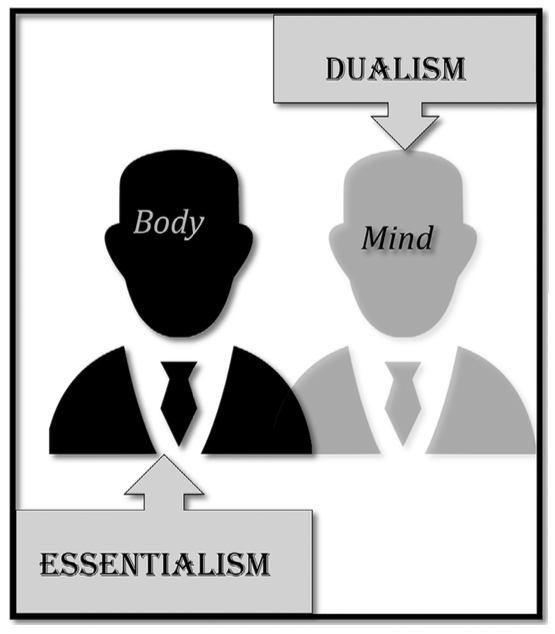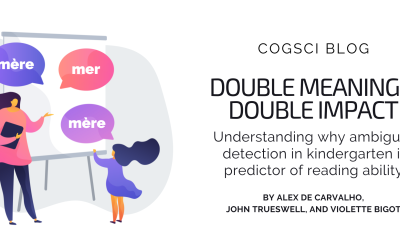Welcome to CogSci Unpacked, an exciting new blog series dedicated to summarizing academic papers from the Cognitive Science, a CSS Journal. Our goal is to bridge the gap between academia and the broader public, fostering a better understanding of cognitive science and making it accessible and relatable to all. If you’re curious to dive even deeper, we invite you to explore the full academic paper.
What is me — mind or body? How can my thinking and emotions possibly arise from a chunk of matter in my head — from meat? And once the flesh is no more, can I still persist?

Figure 1. Food offerings on the day of the dead, Mexico.
Concerns with the mind-body divide are prevalent across cultures, in young children and adults, members of both large-scale societies and small ones (Barlev & Shtulman, 2021; Chudek, McNamara, Birch, Bloom, & Henrich, 2018). And yet, whether people do in fact separate mind and body is uncertain.
The uncertainty arises because beliefs about the mind are often mixed. One set of findings suggests the mind seems mind ethereal; minds can leave the body, migrate to another, and persist after death (Bering & Bjorklund, 2004; Chudek et al., 2018; Cohen & Barrett, 2008).
Other observations, however, suggest that bodies and minds are intermixed. For example, the dead can seem hungry (Figure 1), spirits can only navigate using an “appropriate” vessel (e.g., a stone; Cohen & Barrett, 2008), and, at times, even God can get too busy to attend an urgent call (Barrett & Keil, 1996).
To resolve this puzzle, I suggest that intuitive reasoning arises from the interaction of soft, violable constraints (along the lines of Optimality Theory, proposed for linguistics Prince & Smolensky, 1993/2004).
To illustrate this idea, let us consider a familiar example. Most people like to save on their morning coffee, and they also like it to taste good. The two relevant constraints (“tasty” and “cheap”) thus seem shared. And yet, John attends an expensive boutique establishment (e.g., Starbucks), whereas Bill opts for a cheaper (less tasty) option (e.g., Dunkin’s). How come?
A theory of violable constraints presents a simple answer: while the constraints are shared, John and Bill rank them differently, resulting in different behavioral outcomes (Figure 2).

Figure 2. Shared violable constraints can lead to conflicting outcomes.
Critically, constraint violation, in this view, does not necessarily show that the constraint in question plays no role. Rather, the constraint could simply be overpowered by competing pressures.
I suggest that intuitive Dualism — the belief that minds are ethereal, distinct from the body — is also a violable constraint. Accordingly, infractions of Dualism, in the form of mind-body chimeras, may not necessarily mean that Dualism plays no role. Instead, Dualism could be merely outranked by competing constraints.
In this paper (Berent, 2023), I explore how apparent violations of Dualism can arise from its interaction with Essentialism — the belief that living things possess an innate essence that is hidden in their bodies.
To examine this possibility, I presented participants with two types of psychological traits. One type concerned sensations, actions, and emotions (e.g., seeing, walking, anger) — these are traits that people can readily link to the body (e.g., to the eyes, legs, face). A second type of psychological traits concerned thoughts (e.g., knowing the contrast between good/bad) — traits for which the link to the body is less obvious. A Dualist may thus be tempted to see thoughts as ethereal, distinct from the body.
To determine whether people are indeed “closet Dualists”, I gave them two tasks. One task asked participants to imagine it was possible to create a replica of a person’s body — their task was to determine whether the trait in question would emerge in the body-replica. A second task asked them to imagine that after a person dies, the person continues to exist in some capacity; their goal was to evaluate which of these traits will emerge in the afterlife.
If people consider the mind as separate from the body, then they should view it as likely to emerge in the afterlife, but not in the replica of one’s body. Accordingly, thoughts — which seem to belong to the mind, not the body, — ought to be less likely to emerge in the body replica, but not in the afterlife. This is exactly what was found.

Figure 3. Our sense of self arises from two conflicting biases. Dualism prioritizes the ethereal mind, as distinct from the body; Essentialism underscores our innate essence, which is hidden in our body.
Critically, when people judge the afterlife, they not only do not prioritize thoughts (the traits they consider least embodied) but also those that they consider innate. For example, “knowing the contrast between animate and inanimate” (which is potentially innate) seemed more likely to persist in the afterlife than “knowing the contrast between Paris and London” (which is obviously learned).
I suggest that innate traits were prioritized because they seem to shed light on one’s deep essence, and thus, are more diagnostic of one’s core. This “essentialist” form of thinking stands in contrast to Dualism, as people typically identify one’s essence with one’s body, not the mind (as the present results indeed suggest).
Thus, our sense of a person’s identity — who we are, deep down — is governed by two conflicting pressures. Dualism prioritizes the mind; but Essentialism prioritizes one’s innate essence, which lies in the body (Figure 3). But, just like our coffee preferences (in Figure 2), these two psychological biases are both “soft”, and they stand in tension with each other.
As a result, our sense of self — as seen in our afterlife intuitions, for instance — is chimeric. We aren’t just our ethereal mind, or just our physical body but both. To tell a Dualist, one cannot simply ask whether people consider the psyche as purely ethereal, or purely physical. Our sense of self could well be complex, bifurcated, and contradictory.
References
Barlev, M., & Shtulman, A. (2021). Minds, Bodies, Spirits, and Gods: Does Widespread Belief in Disembodied Beings Imply That We Are Inherent Dualists? Psychological review, 128(6), 1007-1021. doi:10.1037/rev0000298
Bering, J. M., & Bjorklund, D. F. (2004). The Natural Emergence of Reasoning about the Afterlife as a Developmental Regularity. Developmental Psychology, 40(2), 217-233. doi:10.1037/0012-1649.40.2.217
Chudek, M., McNamara, R. A., Birch, S., Bloom, P., & Henrich, J. (2018). Do minds switch bodies? Dualist interpretations across ages and societies. Religion, Brain & Behavior, 8(4), 354-368. doi:10.1080/2153599X.2017.1377757
Cohen, E., & Barrett, J. (2008). When Minds Migrate: Conceptualizing Spirit Possession. Journal of Cognition & Culture, 8(1/2), 23-48. doi:10.1163/156770908X289198
Prince, A., & Smolensky, P. (1993/2004). Optimality theory: Constraint interaction in generative grammar. Malden, MA: Blackwell Publishing.




